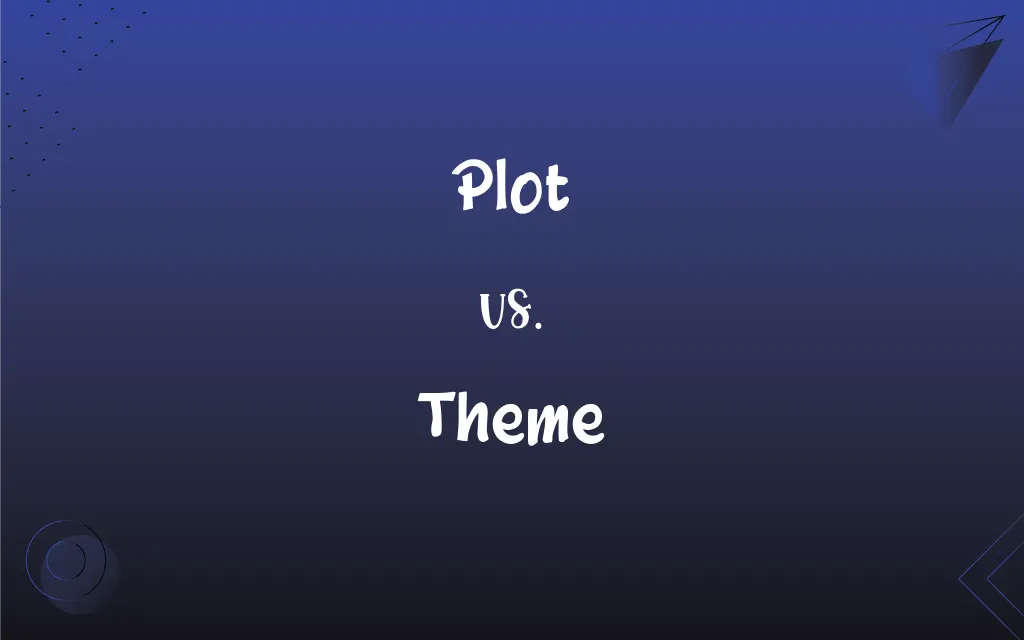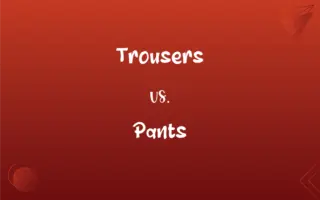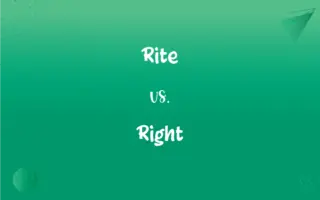Plot vs. Theme: What's the Difference?
Edited by Janet White || By Harlon Moss || Updated on October 21, 2023
Plot is the sequence of events in a story, while theme is its central idea or message.

Key Differences
Plot refers to the series of events that drive a story from its beginning to its end. On the contrary, theme represents the underlying message or central idea that a writer wishes to convey.
A story's plot is concerned with the "what" and the "how." It's the mechanism that moves the story forward, detailing the actions of characters and the consequences of those actions. Theme, meanwhile, deals with the "why." It's a deeper layer of the narrative, addressing the larger questions and topics explored within the story.
For instance, in a murder mystery, the plot might involve a detective trying to solve the crime, navigating through clues, red herrings, and suspects. The theme, however, could delve into the nature of evil or the moral ambiguity of revenge.
In literature, plot provides readers with a sense of structure and progression. It's the tangible storyline that keeps readers engaged. The theme, by contrast, invites introspection, asking readers to reflect on broader societal or humanistic issues, such as love, war, fate, or betrayal.
Authors craft their plots with specific events, twists, and resolutions to entertain and captivate their audience. Themes, however, are more subtle, often emerging as patterns or recurring motifs throughout a work, prompting readers to ponder and interpret their significance.
ADVERTISEMENT
Comparison Chart
Definition
Sequence of events in a story
Central idea or message of a story
Focus
"What" and "How" of the story
"Why" of the story
Role in Literature
Drives the story forward
Provides deeper meaning
Manifestation
Through actions, events, and consequences
Emerges as patterns or motifs
Reader Engagement
Provides structure and progression
Invites introspection and interpretation
ADVERTISEMENT
Plot and Theme Definitions
Plot
A plan or scheme to accomplish a particular purpose.
They hatched a plot to steal the painting.
Theme
A central idea or message explored in a literary work.
The predominant theme of the poem was love and loss.
Plot
The main events of a story, devised and presented by the writer.
The plot of the novel was full of unexpected twists.
Theme
The subject of a talk, piece of writing, or work of art.
The theme of the conference was sustainability.
Plot
A small piece of ground marked out for a purpose.
She bought a plot of land to build her house.
Theme
A setting or situation used as a basis for a fictional story or game.
The video game had a post-apocalyptic theme.
Plot
The storyline of a play, novel, movie, or other narrative form.
The movie's plot revolved around a heist.
Theme
A unifying or dominant idea or motif.
The room had a nautical theme with anchors and ropes.
Plot
A graph showing the relationship between two variables.
He drew a plot comparing the sales over two months.
Theme
A distinctive and recurring form, subject, or feature in an artistic or literary composition.
Motifs of fate and destiny were a theme throughout the play.
Plot
A small piece of ground, generally used for a specific purpose
A garden plot.
Theme
A topic of discourse or discussion.
FAQs
How is theme different from plot?
Theme is the central idea or message of a story, whereas plot is the sequence of events.
Why is the plot important in a story?
Plot provides structure, keeping readers engaged and driving the story forward.
Does every story have a plot?
While most stories have a plot, some experimental literature might lack a traditional plot.
Are theme and message the same?
Not always, but a theme can convey a particular message or moral.
Do themes change over time?
While universal themes persist, their portrayal and emphasis can evolve with societal changes.
Are plots unique to literature?
No, plots are found in movies, plays, TV shows, and other narrative forms.
What is the plot in literature?
Plot is the sequence of events that drive a story from its beginning to its end.
How do authors develop the plot?
Through character actions, events, twists, and resolutions.
Can the same plot have different themes in different stories?
Yes, depending on the writer's perspective and intent, themes can differ.
Can a plot be predictable?
Yes, some plots follow familiar structures or tropes, making them predictable.
Why do writers use themes in their work?
Themes allow writers to explore deeper societal, cultural, or humanistic questions.
How does a subplot relate to the main plot?
A subplot is a secondary storyline that complements or contrasts the main plot.
Is the theme always obvious in a story?
Not always; sometimes themes are subtle, requiring interpretation.
Can a story have multiple themes?
Yes, a story can explore multiple themes simultaneously.
How does plot relate to characters?
Characters drive the plot through their actions, decisions, and developments.
How can one identify the theme of a story?
By noting recurring motifs, patterns, or central ideas explored in the narrative.
Is it essential for a story to have a theme?
While not mandatory, themes add depth and layers of meaning to a story.
Can theme be explicit in a story?
Yes, though themes are often subtly woven in, they can be explicitly stated.
Do all genres of literature have a plot and theme?
While most genres feature plots and themes, their prominence can vary.
Can a single event change a story's theme?
A significant event can highlight or shift focus to a particular theme.
About Author
Written by
Harlon MossHarlon is a seasoned quality moderator and accomplished content writer for Difference Wiki. An alumnus of the prestigious University of California, he earned his degree in Computer Science. Leveraging his academic background, Harlon brings a meticulous and informed perspective to his work, ensuring content accuracy and excellence.
Edited by
Janet WhiteJanet White has been an esteemed writer and blogger for Difference Wiki. Holding a Master's degree in Science and Medical Journalism from the prestigious Boston University, she has consistently demonstrated her expertise and passion for her field. When she's not immersed in her work, Janet relishes her time exercising, delving into a good book, and cherishing moments with friends and family.































































